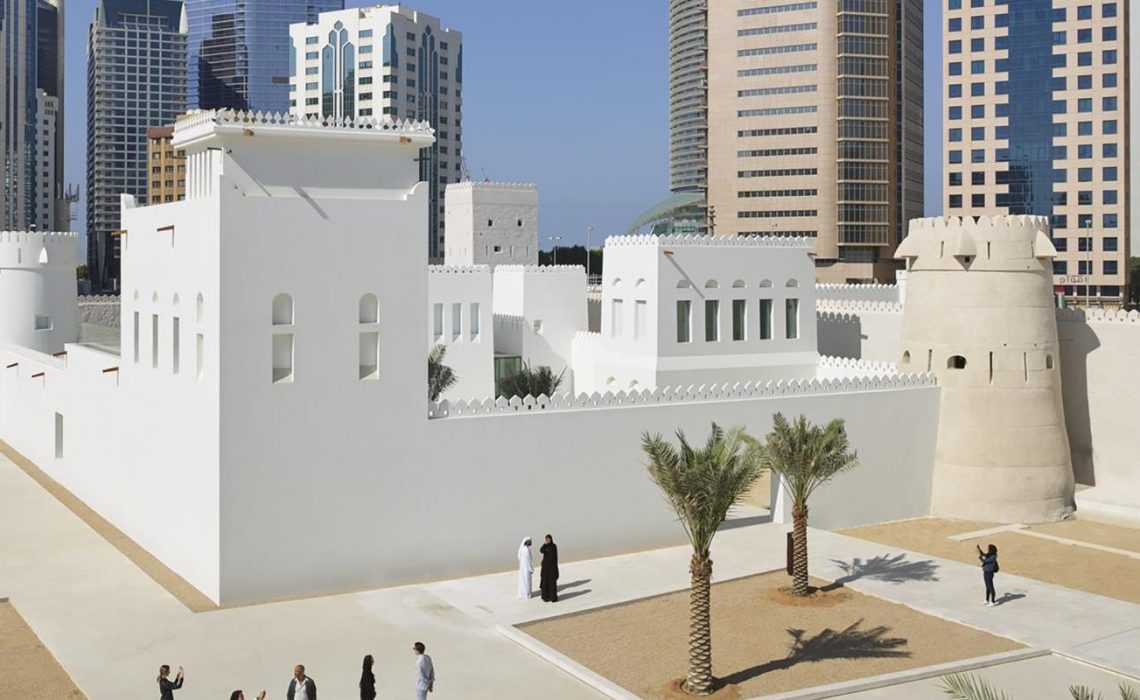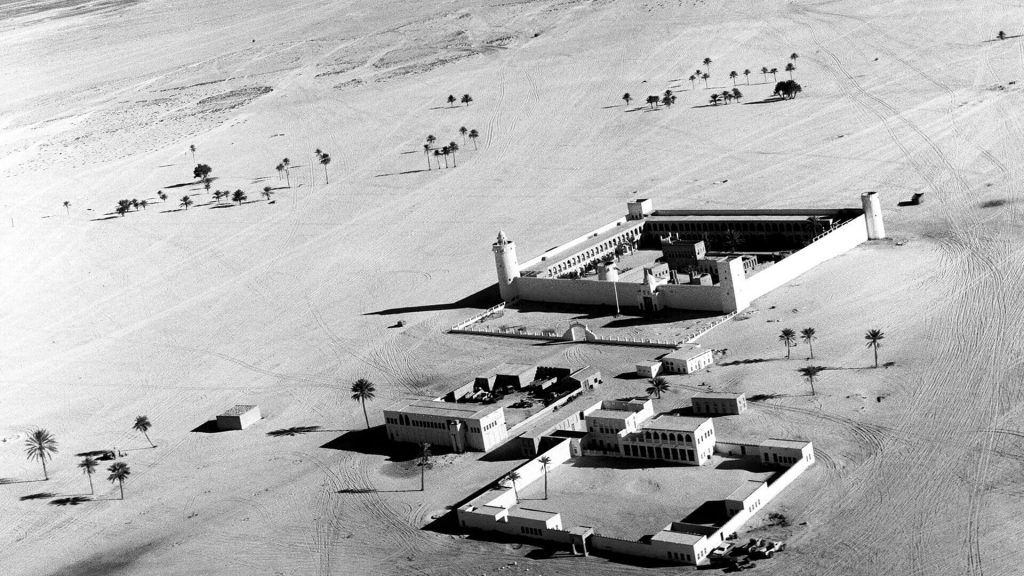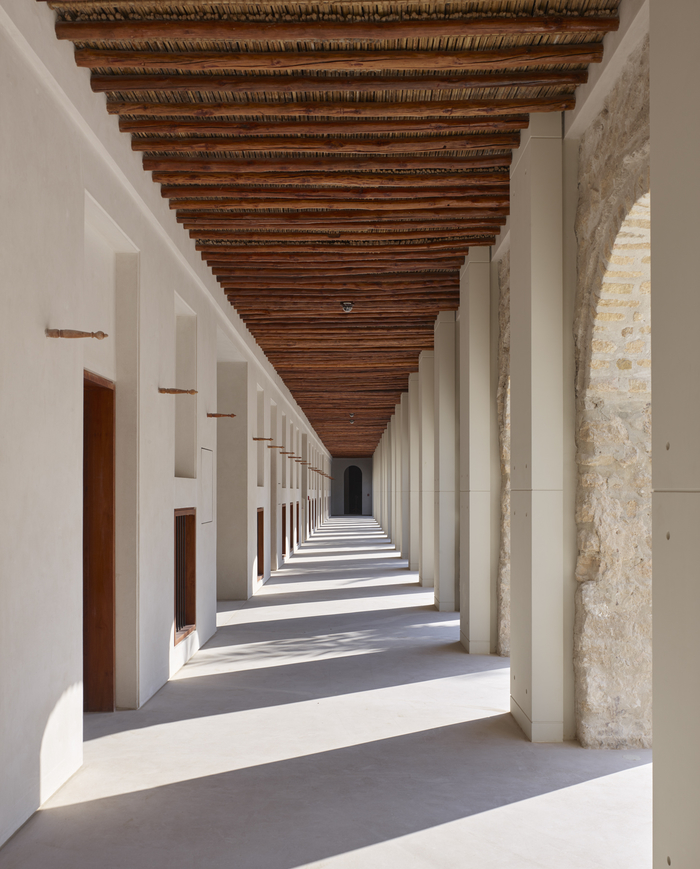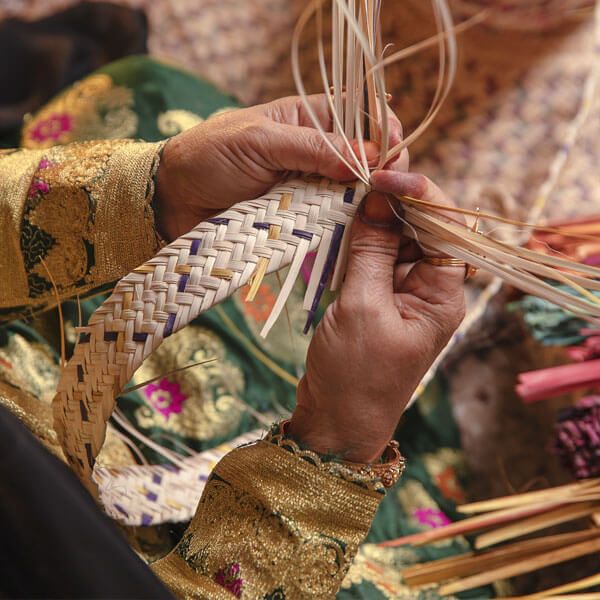
Let us go back in time to get a glimpse of the UAE’s very early history. We will undoubtedly stop at Qasr Al Hosn, one of the heritage sites that are rich in UAE history.
Abu Dhabi was founded in a location known as Qasr Al Hosn, which translates as “Palace” (Qasr) and “Fort” (Hosn) (Al Hosn). Abu Dhabi’s ancient district is also known as the White Fort or Old Fort.
On the island of Abu Dhabi, Qasr Al Hosn was built in 1761 as a watchtower to guard the only freshwater well at that time. But the royal family has lived in Qasr al-Hosn since 1795. Up until 1966, it served as the capital, but today it serves as the country’s living memorial. The oldest structure in Abu Dhabi is currently a well-liked museum as of 2018. It was designed in 1761 by Mohammed Al Bastaki. Its original colour was not white, but during restorations from 1976 to 1983, it was painted a dazzling white colour. Plaster made of lime, sand, and crushed seashells covers the strong walls of Qasr Al Hosn.
The most modern museum, The Louvre Abu Dhabi was opened in 2017 shortly before Qasr Al Hosn was made into a museum.
Now, let us dive deeper and get to know this structure a little bit better.
The History of Qaser Al Hosn:
Since its founding in 1761, Qasr Al Hosn has witnessed all of Abu Dhabi’s historical events, from its early days as a fishing and pearling community to its current status as the richest and safest city in the world.
The construction of the watch tower
According to legend, two Bani Yas tribe members were out gazelle hunting one day when Abu Dhabi was nothing more than an open field. They were thirsty and exhausted when they noticed a gazelle drinking. They tasted the water, and it was delicious. This is how the island came to be known as Abu Dhabi, which literally translates as “father of the gazelle,” and is often associated with the story of the gazelle leading the Bani Yas to water.

Sheikh Dhiyab Bin Isa, the Bani Yas tribal sheikh from the interior Liwa Oasis, gave the order to build the watchtower out of coral and sea stone. After discovering a water supply on the island of Abu Dhabi in the early 1760s, the Bani Yas tribe established a permanent colony there. They built the Watch Tower, known as the Qasr Al Hosn, to protect only freshwater wells.
The construction of the Inner Fort
Sheikh Shakhbut Bin Dhiyab commissioned the construction of additional towers, now known as the Inner Fort, between 1793 and 1816. The Bani Yas eventually moved their administrative centre from Al Dhafra to Abu Dhabi Island. The inner fort was built to protect the growing settlement and the developing pearling business. A pavilion and prayer hall were also built as part of the inner fort.

The fort housed the ruling family, served as a military command centre, and served as the seat of government. To put it another way, Qasr Al Hosn was renamed “Hosn Abu Dhabi,” which is Arabic for “Abu Dhabi Fort.”
The inside fort exhibits explain the country’s history and include artefacts and images dating back 8,000 years. Among the artefacts are ancient clay artefacts, bangles, jewellery, stone tools, oyster shells, and leather well buckets. The history includes information on the oil industry and the pearl trade. The inner fort is dedicated to Abu Dhabi’s three most notable rulers as well as the Baniyas clan and the Al Nahyan family’s history.
The construction of the outer palace
The fort was converted into a palace during the construction of Qasr Al Hosn in 1939–1945 because there were no longer any external threats to the populace or the royal family.

The outside palace houses information on modern history from 1939 to 1966. This section includes information on what men and women did back then as well as wireless radio communication devices. The rooms of members of the ruling families are also on display. Radios and cameras from that era are among the items on display. The palace is equipped with a traditional “Barjeel” ventilation system, which is an old-fashioned form of natural cooling.
The construction of the North-East Tower
The 1000 dirham banknote features the North-East Tower, one of Abu Dhabi’s most recognisable architectural landmarks. It is the tallest and most elaborate tower at Qasr Al Hosn and was built during the 1940s development. Murder holes and pistol slits are among the defensive features of the tower. The tower is three stories tall with a cupola on top.

The construction of the Majlis
The Arabic word for “council” is “majlis.” Pavement patterns in this area identify Sheikh Shakhtub bin Sultan Al Nahyan’s former majlis. Sheikh Shakhtub bin Sultan Al Nahyan held public consultations here and welcomed distinguished guests. It was constructed without roofs for the first time in the 1940s. The majlis building was modified later, but it was demolished during a restoration project in the 1980s to restore its original appearance.
Sheikh Shakhtub bin Sultan Al Nahyan is the grandfather of the current President of the UAE, Sheikh Mohammed Bin Zayed Al Nahyan.
Other Important Places You Can See There
The House of Artisans
The House of Artisans provides training programmes, educational seminars, and other public activities to both locals and visitors. It preserves and promotes traditional Emirati crafts in contemporary culture. Arab women weave with the wool of sheep, camels, and goats using the traditional “sadu” method. “Khoos” weaving employs date palm leaves to create useful items such as baskets and hats. Talli is a type of cotton embroidery that is hand-woven and traditionally done by Emirati women.


Cultural Foundation
The Cultural Foundation, a well-known arts and culture centre, is another excellent family destination. It all started in 1981. It provides workshops, classes, and exhibitions for tourists, as well as a library for children.
Tickets And Timings
Visitors may tour the fort on Saturday through Thursday from 9:00 AM to 8:00 PM and on Friday from 2:00 PM to 9:00 PM. A general admission ticket will cost you AED 30. General admission and other special workshops and events tickets can be either purchased online or at Qasr Al Hosn.
This was just a quick virtual visit to one of the most important landmarks that tells the interesting history of Abu Dhabi. Qasr Al Hosn is definitely one of the top things to do in Abu Dhabi. Have you ever visited this magnificent structure? Are you planning to pay a visit soon? Tell us about that in the comment section down below.





